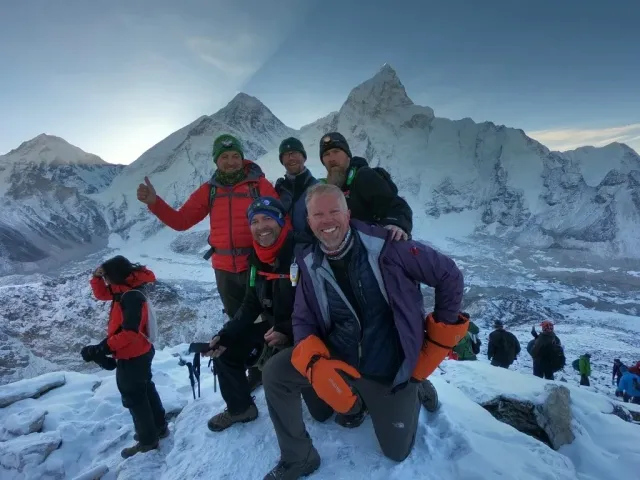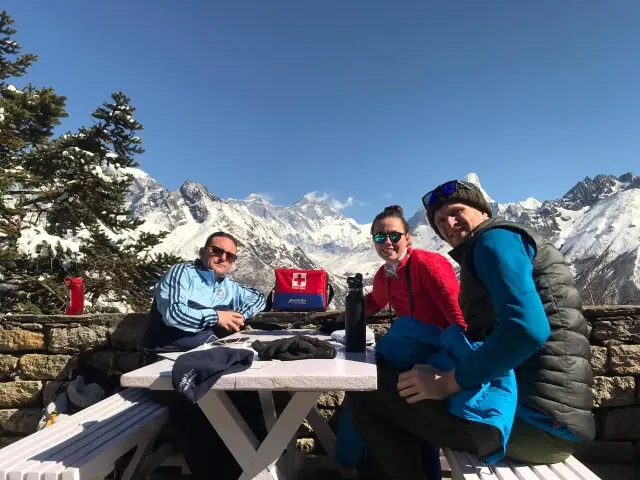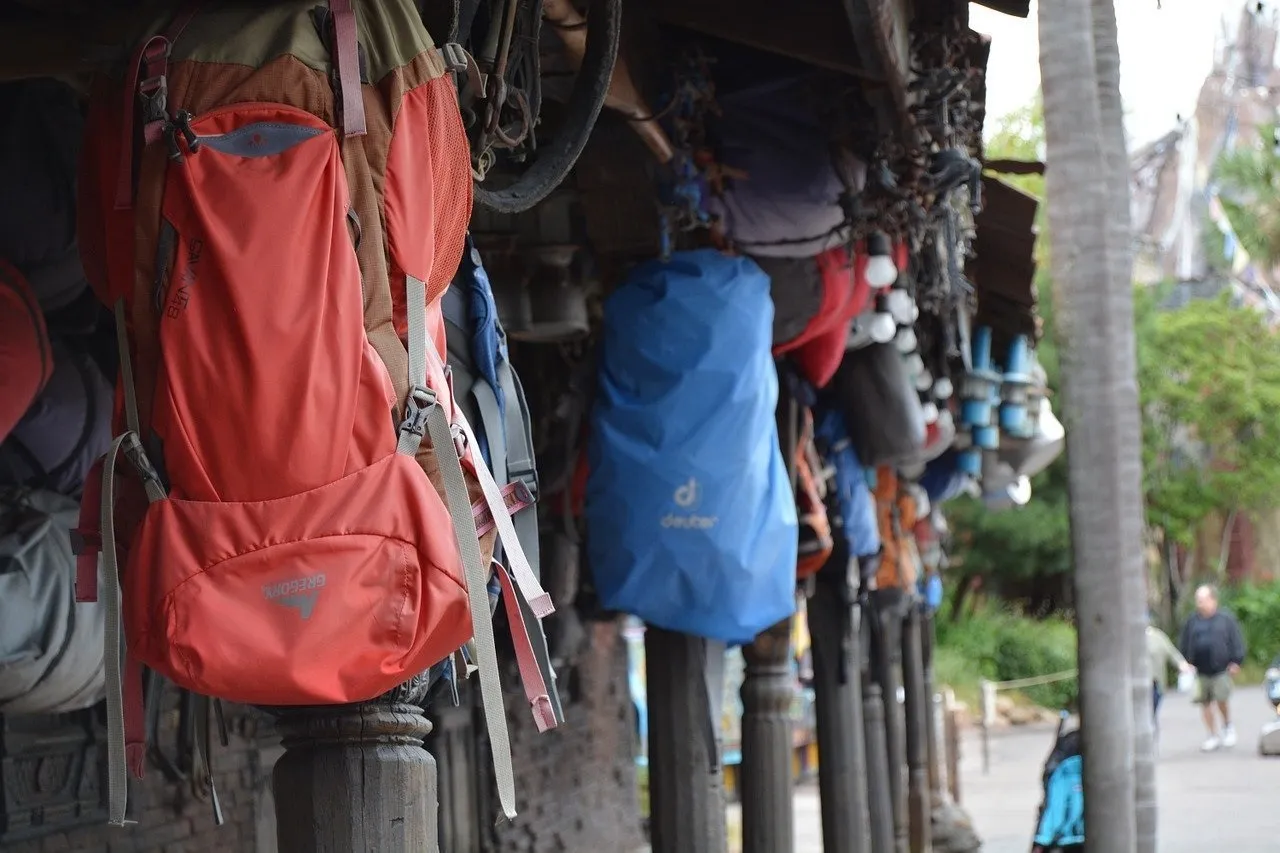Everest Base Camp Packing List for March, April, and May
Everest Base Camp Packing List for March April and May:
March, April, and May months fall on the spring season. It is the season of rejuvenation, new beginning and hope. During the spring season, there will be exotic surrounding, pristine nature, and favorable temperature for trekking. So, it is the best season for the Everest Base Camp Trek. Everest Base Camp Trek is a high altitude trek and climate in the mountain region is usually unpredictable as it completely changes according to the season and altitude. Therefore, trekkers need to be wise while packing the appropriate gears and checklist for trekking in the Everest Region. The temperature in the spring season is adorable and static. During March and April, the days are warm and clear and it is blessing for trekking. But in May, there is a little chance of rainfall in lower region in the day time. So, the packing list must include the right gears, items, and gadgets according to months. Many trekkers seem confused regarding the Everest Base Camp packing list. Most of the trekkers are unaware about the climate in different seasons and some don’t know about best packing list. So, we have prepared the best guideline that will help to choose the best Everest Base Camp trek packing list for March, April, and May. 
Bags, backpacks, and rain cover:
The comfort and ease on the trek mainly depends on your bags and bag pack. So, use light bags for the easy and pleasurable trek. While trekking in the Himalayas, you need to carry a duffle bag or a small light daypack or backpack.
- Duffle bag: The duffle bag mainly includes your trekking gears, cloths, and extra items and carried by the porters during your entire trek. If you are trekking with MMT, you don’t need to purchase the duffle bag as it is provided by the company.
- Backpack: 50-60 Liter bag with an opening at the top will be perfect if you are trekking in the Himalayas individually. Make sure the backpack is enough okay to carry all your items.
- Daypack: The daypack is a small bag which is carried by the trekkers themselves during the trek. You can keep some personal documents, rain gears, medicines, perks, and other valuable items needed for you regularly.
- Rain cover: Along with the bags and backpacks, you need to carry perfect sized rain cover to protect your bags and gears from rain, wind, snow, and dust.
Clothing list:
Everest Base Camp Trek is normally a 10-22 days trek which is quite a longer trek. So, you need to carry enough cloths and appropriate footwear needed for the trek and at the tea houses. Check the clothing list you need to carry in your bag pack:
- Trekking Cloths:
- Base layer (Full-sleeve/half-sleeve): Always dress in a layer so that you can wear in or take off the clothes as temperature decreases or increases on the trails. Pack the moisture-wicking cloth so that the sweaty smell and moisture get easily absorbed on it. For the summer month of May, pack the half sleeve base layer.
- Insulation layer: The 2nd layer of the cloth must be a light breathable light jacket of fleece. In the morning time of March and April, the fleeced jacket will be helpful to maintain the warm temperature. In May, it will be optional.
- Outer layer: The outer layer is a down-jacket which keeps you warm during snow-fall or extreme cold. It must be a wind proof and water proof. In the first week of March, it will be useful. But after that, the outer layer may become optional for the months of March, April, and May.
- Rain coat/Poncho/rain jacket: The May month is the beginning of the summer season. So, there will be chances of light rainfall in the lower elevation. We suggest you to add a raincoat in the packing list.
- Trekking trousers: Add the comfortable, water proof, and fleeced trousers in the packing list for trail over 4,500m to Everest Base Camp Trek. For the lower region trek in the spring season, you have to carry trekking tights, trousers or leggings that are moisture wicking. In May, you can’t walk in heavy fleeced trousers. So, add a fleeced, a hiking trouser, and a legging if possible.
- Underwear: It is better to have couple of sports underwear in the list. Breathable and moisture wicking underwear are the most appropriate ones for trekking.
- Tea House cloths:
- T-shirt: Pack the cozy and light sleeve or half-sleeve T-shirt to wear at the tea houses. The tea houses are warm during March, April, and May; so you can adjust the temperature with a light cloth.
- Shorts/pants: For the tea houses, you need extra shorts and pants/trousers which make you comfortable.
- Light wind proof jacket: The light jacket will be useful just in case there will be cold wind in the month of March.
Footwear:
The Everest Base Camp Trek is a long days trek. So, the trekkers must add the genuine hiking boots/shoes which will be comfortable for hour-long trekking. The genuine boots help to avoid the problems like blisters, aches, and Raynaud syndrome. Therefore, be more conscious while purchasing the trekking shoes.
- Hiking boots: You must include a comfortable, right sized, reliable, and waterproof hiking boot for the Everest Base Camp trek.
- Light trekking shoes: While trekking in the spring season, light hiking shoes will be comfortable.
- Sandals: The sandals can be the best footwear to wear at the tea houses, cafes, restaurants, etc.
- Hiking socks/Thermal socks: Add few moisture wicking woolen hiking socks in the packing list. While trekking in the spring season, there is no compulsory of thermal socks as the months of March, April, and May are post winter season.
- Shoe gaiters: Gaiters are the special garments strap over shoes and around the legs to protect from water, mud, thrones, snow, and bugs. It is optional while trekking in the spring season.
Gloves:
You need to protect your most exposed body organ like hands during the high altitude trek. So, add waterproof and fleece gloves in the packing list for Everest Base Camp Trek. It helps to prevent from frost bite. But, while trekking in the spring season, there will be no extreme coldness in the Everest Region. Though, we advise the trekkers to add gloves in the packing list.
- Inner gloves: You can use the thin gloves while trekking in March, April, and May months.
- Waterproof/windproof gloves: Although the climate is moderate and warm in spring, add waterproof gloves if in case the climate turns colder during morning and evening time in first week of March.

Headwear:
The morning and night climate in the higher elevation during March, and April can be colder than May. Therefore, the trekkers are suggested to add suitable head ware in the list. The head wears don’t consume huge space so there will be no big issue if they don’t come on use during the trek.
- Wide brim trekking hat: To protect your face in the bright sunny daylight of March, April and May months, you can pack a trekking hat.
- Woolen cap: The Everest Region above 4,500m is colder than the lower region. So, a woolen Beanie can be a good choice to protect your ears and head from the cold breeze.
- Neck Gaiter or neck warmer: To protect your nose and neck from the cold wind, add a gaiter in the EBC packing list.
Sleeping gears:
March, April, and May are the peak trekking months in Nepal. Especially in April, the Everest sees huge number of trekkers and it will be difficult to get room at the tea houses. So, it is a wise decision to add the sleeping gears in the EBC packing list.
- Sleeping bag: When you are trekking in Nepal individually in peak seasons then you need to have a sleeping bag. For sleeping bag, do some web-surfing as some shops in Kathmandu also rent sleeping gears. But if you are trekking with the trekking company then you don’t need to worry about it as they would manage the tea house or lodges for your accommodation. In case of MMT, we offer the sleeping bags to the trekkers in free of cost if needed.
- Sleeping liner: Tea houses in the EBC trekking routes provide the facilities of quilt/duvet to the trekkers. But, at some tea houses, you have to adjust the cleanliness. So, it is always a better idea to carry a liner with you.
- Eye mask and ear plugs: In the month of March, April, and May, the tea houses are normally crowded. If you are a light sleeper, and want to avoid any unpleasant noise, gossip, and snoring then you must add eye mask and ear plugs during Everest Base Camp Trekking.
Trekking gears:
You need to have proper trekking gears in the Everest Base Camp packing list if you want to enjoy the blissful trek in the Himalayas. The gears include:
- Trekking poles: The trekking poles help to reduce the joints pain and help to walk steadily in the high Everest Trekking trails. The trekkers trekking with MMT will get trekking poles in free of cost. So, before purchasing the poles, contact the spoke person of the company.
- Sunglasses: Always carry UV protection and light reduction sunglasses for Trek. The two in one glasses helps to walk in sunny light or in the evening time.
- Headlamp: In the May month, there will be drizzle rain in the lower elevation which will make the vision unclear. So, carry a torch or headlight in the EBC Trek packing list. The head lamp is useful when sometimes the trek becomes a late night trek due to some unforeseen incidents.
- Water bottle: Carry at least 2 water bottles of 1litre each. Trekkers need to drink 3-4 liters of water per day. The spring water on the trails isn’t also safe for drinking directly. To make the spring water pure by adding chlorine or to fill the filtered water at the tea houses, trekkers must carry a water bottle.
- Pee funnel: The tea houses in the EBC Trails are at certain distance and there are no public toilets in the trails. So, the pee funnel is an important tool while trekking through the dense forest of Sagarmatha National Park in the longer days trek. If you are a female trekker, add the pee funnel in the checklist.
Gadgets:
To make the trek easy and comfortable, you must add the portable, light, and easily fit gadgets while trekking in the Everest Region.
- Camera: Basically, we don’t recommend having a DSLR in the trek as you have to carry a day backpack as well as camera which make the trek difficult and heavy. Instead, you can carry a simple camera or smart phone for taking photos. If you are a professional photographer bring your DSLR camera and lenses as March, April, and May are the best months for breathtaking photography.
- Camera battery/ Portable charger/power bank: Batteries drain quickly in the cold temperature. So, it is wise to bring own portable charger or power bank. Charging facilities are available at the EBC tea houses but in spring season, the power socket is busy due to high number of trekkers waiting their turn for charging.
- Journal/guide book/ book: Books can be the optional checklist in the backpack. Reading books after a short day hike also release your tiredness.
* Note: Laptop: Everest Region is a colder region and battery drains quickly. Also, the laptop is not a useful gadget while trekking in the longer days trek. You don’t get enough time to work on laptop after the tiresome trek. So, don’t add laptop in the packing list if possible.
Important documents and money:
- Insurance: You must get a travel or trekking insurance which includes baggage, flight, and medical evacuation. While trekking in the Himalayas, it is best decision to insure from the renowned trekking agencies.
- Passport: Carry the valid date passport secure with you in your daypack.
- Cash: Keep some Nepali currencies with you while trekking in the Himalayas as you need to buy some perks or some extra expenses during the trek.
Medications, first-aid kit and toiletries:
- Oximeter: Trekking with MMT is an advantage for you as you don’t need to carry oximeter. We provide the oximeter for your regular health check and heart beat.
- Water purification tablet or UV purifier
- ORS or Isotonic powder: To rehydrate quickly in high altitude trek you have to use ORS powder.
- Diamox: Diamox is the medicine used to reduce or prevent the symptoms of acute mountain sickness (AMS).
- Ibuprofen: Add ibuprofen in the list to use in case of joint pain or muscle ache.
- Antibiotics, plasters, and other medications: Diarrhea, common cold, and some other flu can make you suffer in the higher elevation. Blisters or cuts can also make problem while trekking. So, carry some medications related to them.
- Other toiletries and personal items: hand sanitizer, deodorant, towel, diaper rash cream, face lotion, hair brush, tooth brush, tooth paste, hair ties, headband, wet wipes, toilet paper, tampons, pads, etc.
 Final conclusion:
Final conclusion:
Spring season is the 2nd best trekking season in the Himalayas. The blue sky, sparkling mountains, clear days, and moderate climate in March, April, and May rejuvenate the soul. What adds more effort to maintain the safety, success, and satisfaction of the trek make the trek is appropriate Everest Base Camp Trek packing list. Failing to add the compatible gears while trekking in the months of March, April, and May ruin the trek. Everest Trek is once in a lifetime experience so be conscious and pack the handy cloths, gears, paperwork, and extra items in the packing list. For any other information or booking, contact us at the given contact address. We are always prompt at replying and sorting your queries and dilemmas.





 Final conclusion:
Final conclusion:
